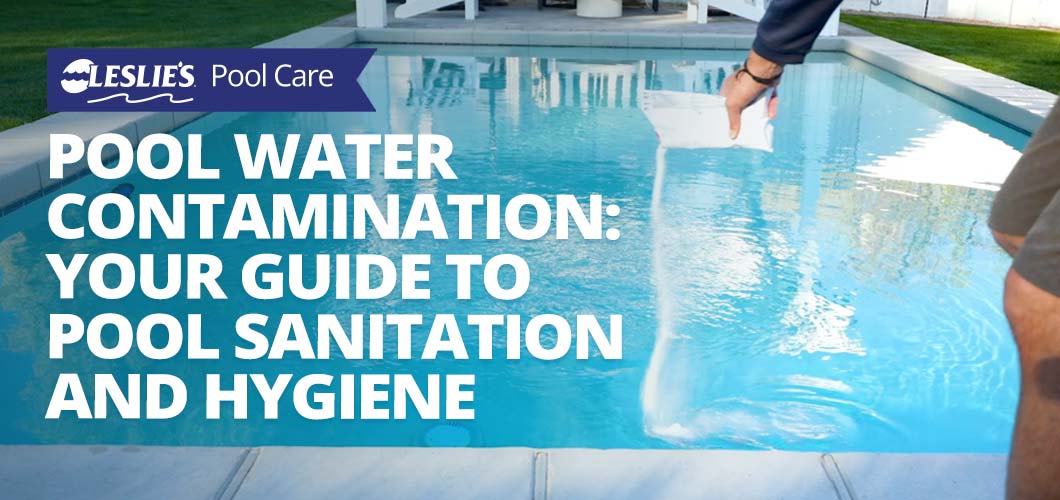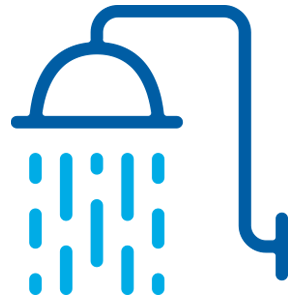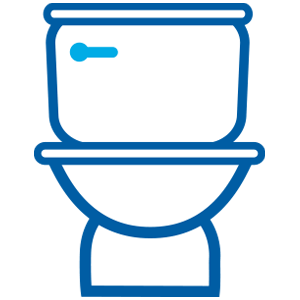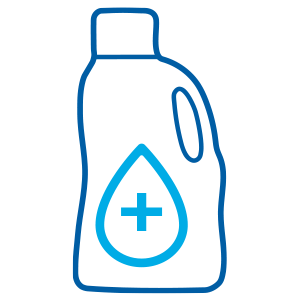
Pool Water Contamination: Your Guide to Pool Sanitation and Hygiene
Summer days make the blue, cool waters of a swimming pool look inviting. But before you take the plunge, make sure these pools are actually as clean as they look. Just because a pool looks clean doesn't always mean it is. WAIT, what?! You heard right. You’d be surprised how much yucky stuff is in a swimming pool, whether it’s a public pool or the pool in your own backyard. Things like urine, feces, sweat, and dirt can all easily make their way into a pool, even without someone having an accident — GROSS! But in the event someone does have an accident and there's pee or poop in the pool, don't start draining all the water just yet! This article will shed some light on the proactive measures you can take to ensure proper pool sanitation.
It Smells Like Chlorine! Is it Safe?

Does the intense smell of chlorine take you back to your childhood? It's fun to reminisce about those hot summer days spent swimming and hanging out by the pool. But that strong odor you chalked up to regular pool maintenance — a sure sign it was properly taken care of — is, in fact, a telltale sign of insufficient sanitizer levels and poor water sanitation. You see, that's not really chlorine you're smelling.
That strong chlorine smell happens when chlorine molecules combine with the ammonia and nitrogen left behind in the water. If you smell a strong chlorine odor around your pool, you're actually smelling inactive combined chlorine, also known as chloramines. Contrary to popular belief, a strong chlorine odor actually means you need to shock the pool (i.e. add more chlorine).
Pool Water Contamination: What's in Your Water?
According to the Centers for Disease Control and Prevention, people who don’t shower or rinse off before entering a pool are most likely to spread swimming-related illnesses. These illnesses include diarrhea, skin rashes, ear pain, cough, congestion, and even eye pain. While you may think your pool is clean and maintained, all it takes is for one person who has been sick (or is currently sick) to welcome E. coli, Cryptosporidium, Giardia, and other disease-causing microorganisms into the water.

Here's a not-so-fun fact. According to one study, the average person unknowingly carries 0.14 grams of feces into the water during a swimming session. That means for every 7 swimmers in the water, that's about one gram of poop in the pool. Yet another study found a surprising amount of urine in community swimming pools. In fact, they found that one 110,000-gallon commercial-size swimming pool contained almost 8 gallons of urine. In an average residential pool, that would translate to about 1–2 gallons of pee in the pool.
And it's not just humans bringing in these contaminants, either. Bird droppings, curious animals, and even weather events can bring all sorts of harmful microorganisms into the water.
But not to worry! Maintaining proper water balance and adequate sanitizer levels takes care of these contaminants and keeps the pool safe for swimming.
Preventing Recreational Water Illnesses
Did you know that diarrhea is the most common recreational water illness? Not drinking the pool water is a universal rule, and it helps reduce the chances of contracting a water-borne illness. But accidentally ingesting small amounts of pool water does happen, especially in young children. Ingesting contaminated water is the #1 way to contract a digestive illness during a swimming session. Should you be worried about germs in the swimming pool? Of course! But it's manageable with proper water care. So how can you keep your pool and swimmers protected?
PRO TIP: Maintaining well-balanced pool water is a crucial first step in making sure your sanitizer can work effectively. Bring a water sample to your local Leslie's for a FREE in-store AccuBlue® water test and customized treatment plan. If there are any issues with your water, our easy-to-follow instructions will help you get your pool back on track.
Safety Measures to Fight Off Pool Contaminants
To help avoid swimming-related illnesses caused by contamination in your pool, follow these helpful tips.

Take a Quick Shower
Before jumping into any pool, take a quick shower to rid yourself of unwanted germs, bacteria, or other contaminants. Even if you don't want to do a full-body soap-and-water scrub, a quick one-minute rinse can remove much of the sweat, dirt, and oils that react with chlorine.
Once you get out of the pool, another quick rinse or shower is essential for proper hygiene.
Take Children on Potty Breaks
Toddlers and children still in diapers need to be taken out of the pool periodically for potty breaks. Even if your kid has a swimming diaper on — and decides to use it — that doesn’t guarantee nothing will spread into your pool.

Belly in Knots? Grumbling Gut? Stay Out of the Pool!
This may seem like common sense, but you’d be surprised how many people enter a pool when they’re currently having — or recently had — bowel problems. Fecal particles, bacteria, and other microorganisms from your illness can spread into the pool and cause other swimmers to become ill.
We hate to break it to you, but if you’re sick, or just getting over being sick, you’ll have to stick to the sidelines until you’re in the clear, health-wise.
Don’t Pee in the Pool

You're probably familiar with the tale your parents told you as a child. They'd say if you peed in the pool, the water would turn a bright color and you’d be caught red-handed! Surprise: your parents lied to you. To be fair, it was their way of trying to discourage you from doing your business inside the pool. Unfortunately, it’s very common for people — young and old alike — to urinate in the pool.
Before you run out of your pool screaming in disgust, remember that the chlorine in your pool is there for a reason. Chlorine has the ability to kill and break down microorganisms, keeping your pool free from a lot of different types of germs and contaminants. So if the upkeep of your pool includes good water balance and proper amounts of chlorine, then pee in the pool doesn't pose a huge sanitation threat. But it'll still use up chlorine quickly and create an unpleasant chloramine odor, so don't do it. Just don't!

"Mom, There's Poop in the Pool!" Everybody Out!
If you find yourself in the unfortunate situation where somebody decided that doing their "number two" business in the pool was the perfect place to do it, the first thing you should do is get everyone out of the pool immediately. Hang up a sign if you need to, but the pool is officially off limits until further notice.
Once everyone's out of the pool, try to remove as much of the feces as possible. Assuming it's solid matter, we recommend using a net and bucket for this — NOT a vacuum. Remember to wear disposable gloves to protect yourself, as well. Properly dispose of the feces, and thoroughly clean and disinfect the item(s) used to remove it from the pool. If there's no debris left on the net, you can disinfect it in the pool during the next step.

Next, shock your pool with chlorine. For an incident involving solid matter, the CDC recommends using unstabilized chlorine, such as sodium hypochlorite (liquid chlorine) or calcium hypochlorite (Leslie's Power Powder Plus 73) to raise the chlorine level if the Free Available Chlorine (FAC) reading is below 2 parts per million (ppm). Maintain an FAC level of 2 ppm or higher and a pH level of 7.5 or lower for at least 25–30 minutes. A higher FAC level of 3 ppm only requires 19 minutes of disinfection time. If your pool has a high level of Cyanuric Acid, add more time and/or increase the chlorine level to ensure proper sanitation of the pool water. Keep the pump running on high speed for the entire disinfection period to ensure proper filtration and circulation.
On the other hand, if the incident involved diarrhea, the CDC recommends using a higher concentration of shock to superchlorinate the water over a longer period. Either shock the pool to raise the FAC level to 20 ppm or above for about 13 hours, or raise it to 10 ppm or higher for 26 hours, leaving the pump running at high speed. Again, high levels of Cyanuric Acid will require higher chlorine levels and/or a longer disinfection period. Following a diarrheal incident, it's important to thoroughly backwash/clean your filter or (when appropriate) replace the filter media entirely.
Only open the pool again once the water has been properly disinfected. If you superchlorinated the pool, make sure the FAC level is back within the ideal range of 1–4 ppm before allowing swimmers back in the water.

Add Enzymes to Your Pool Care Routine
Although enzymes aren't classified as a sanitizer, they can go a long way in helping prolong the lifespan and maximize the efficiency of your existing Free Available Chlorine. Enzymes break down all the non-living organic contaminants hanging out in your pool water. This includes things like sweat, body oils, cosmetics, sunscreens, and detergent residues brought in by swimmers.
Using a product like Leslie's Perfect Weekly as part of your regular water care routine reduces chlorine demand and keeps your chlorine focused on destroying living microorganisms. As an added bonus, Perfect Weekly also contains a phosphate remover to prevent algae and a liquid solar cover to reduce evaporation — it's the only 3-in-1 pool maintenance chemical of its kind.
PRO TIP: Is your pool water safe for swimming? Maybe, maybe not — it depends! Take a look at this Resource Center article to dive into the most common water safety myths. You'll also learn some helpful tips to keep your pool safely sanitized this summer.
Keeping the Pool Clean, Safe, and Beautiful

Now that you're thoroughly grossed out, we want to emphasize that this is in no way intended to discourage you from swimming in a pool again. Pools are meant to be fun, relaxing, and a place to enjoy time with friends and family. The purpose of this article is to let you know that even though your pool might look clean, it may not actually be as clean as you think. That is, unless you've been keeping up with proper water balance and sanitation.
Of course, accidents can — and do — happen from time to time. No matter how icky the incident might be, there’s always a solution to make your pool swimmable again. Maintain properly balanced pool water, keep Free Available Chlorine levels between 1–4 ppm at all times, have a healthy supply of pool shock on hand, and your pool will stay clean, safe, and beautiful all summer long.
Looking for more info? We have some great articles on pool care and water sanitization you should take a look at — especially if you’ve got a pool party in the near future. After all, a clean, well-sanitized pool is something we all strive for!